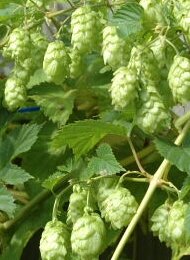|

|
-
Pedigree: Selected as a seedling in 1911 from a little-known variety called Bate's Brewers, it was eventually named after the brewery that owned the farm. The original variety was selected in 1880 by John Bates of Brenchley from a hop garden in the Sevenoaks Weald district.(see 'English Hops' by George Clinch (1919) page 17)
-
General Trade Perception: Produces a sweet, fruity flavour with a mild, clean bitterness. A more robust flavour than Kent Goldings. A good general purpose aroma variety.
-
Possible Substitutions: Kent Golding, Progress.
-
Beer Styles: Traditional ales.
-
Maturity: Mid-season
-
Yield: 1,350 - 1,450 kg./ha or 1,190 - 1,278 lb./ac.
-
Growth Habit: Moderate.
-
Disease Reaction: Tolerant to progressive Verticillium wilt and to hop mosaic virus. Susceptible to downy and powdery mildew.
-
Pickability: Fair.
- Lupulin:
-
Cone Structure: Medium sized, loose.
-
Aroma: Distinctive and fruity
| Alpha Acids (%) |
5.5 - 7.5
|
Beta Acids (%) |
2.0 - 2.7
|
| Alpha/Beta Ratio |
2.4 : 1
|
Co-Humulone (%) |
33 - 35
|
| Humulone |
|
Storage (% lost) |
|
| Oil Content (mls/100g) |
0.8 - 1.2
|
Humulene ( % in oil) |
42
|
| Caryophyllene (%) |
13
|
Hum/Cary Ratio |
|
| Farnesene (%) |
2.1
|
Myrcene (%) |
27
|
|